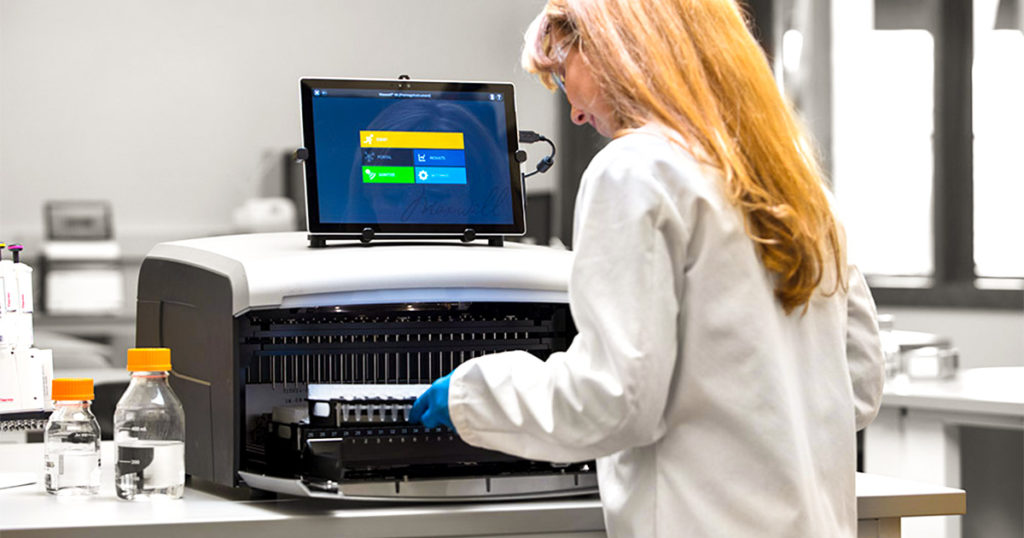
Nucleic acid extraction is a time-consuming, resource-intensive process, but it doesn’t have to be. Automated systems are becoming more and more accessible and often can be operated with simple “plug and play” kits, freeing valuable resources
With these systems increasingly within reach, perhaps you’re thinking about introducing automated nucleic acid extraction into your lab. As you consider your options, here’s eight reasons why we think you should automate your nucleic extraction workflows.
8 Reasons to Automate Nucleic Acid Extraction in Your Lab:
1. Reach your project milestones and publish faster.
In the fast-paced, competitive environment of research and technology development, efficiency is key to reaching project milestones and publishing your work. Managing your resources effectively–especially time–can help you reach those goals.
Time spent on manual nucleic acid extractions is time lost on parallel work, which cuts down productivity. Automation is not only often faster than manual preparations, but it also frees your team to do more valuable hands-on work.
As an example, the Maxwell® RSC cuts 40 minutes of hands-on-time per 16 samples. As the number of samples scales to 96 and beyond, liquid handlers like the Hamilton Star or Tecan Fluent can save many hours of hands-on-time per day.
2. Get more extractions done and increase your throughput.
High sample numbers require increased throughput, and scaling magnifies the benefits of automation. Automation allows costs per samples to decrease as processes scale, whereas the cost of manual preparations remains the same or increases.
“Promega helped us develop an automated system capable of handling more than a thousand samples per shift at about 40% of the original cost.”
Stephanie Dormand, Molecular Supervisor at UniPath Women’s Health.
Learn how automation helped UniPath expand their diagnostic lab’s capacity.
3. Increase precision and reproducibility.
Consistency in specimen processing methods is especially critical for diagnostic labs, large multi-lab and longitudinal studies and service and core labs. But human error increases as the scale of studies increase and the impact of error can be profound.
Automation is one of the tools that can improve reproducibility in the biological sciences and can limit the number of variables to consider when trying to untangle inconclusive results.
4. Avoid contamination.
Due to the precision of automated nucleic acid extraction systems, processes can be optimized to nullify the risk of contaminants downstream, especially from well-to-well cross-contamination.
5. Maximize your skilled personnel’s potential.
Are your lab’s staff scientists, post docs and lab researchers performing manual nucleic acid extractions? If they are, then you have highly skilled professionals performing relatively simple and mundane tasks, a steep labor cost for routine work.
Automated systems help your team make full use of their expertise and experience. You can foster greater satisfaction in your team by showing them that their time and skills are valued and by enabling them to work on more interesting and challenging projects.
6. Support trainees’ development.
PIs are stewards of their students’ successes and professional development. Being able to perform nucleic acid extraction is not a highly marketable skill. Free students’ and trainees’ time from mundane tasks so they can focus on research or developing more specialized skills.
7. Increase the scope of your work.
When automated systems help you get results faster with less labor, your lab can potentially analyze more parameters, include more patient samples or test more drug candidates, for example. Freed time also creates opportunities to take on other techniques and tools and to understand systems more fully with multi-omic approaches.
8. Streamline other tasks into a single automated workflow.
Steps supporting automated nucleic acid extraction can also be automated, often within the same platform. Sample management through barcode tracking, sample transfers to 96-well plates, normalization and PCR setup can all be integrated into one seamless workflow.
Learn more about how Promega can support your automation needs from low-throughput benchtop automation (1–48 samples per run) to high-throughput automation (more than 96 samples per run).
Find the lab automation resources you need at Promega’s Lab Automation Resource Center.
Latest posts by Jordan Nutting (see all)
- The Central Dogma of Promega: The Story and Science Behind Our Kit Packaging Design - May 7, 2024
- Silencing the Immunogenicity of AAV Vectors - April 4, 2024
- Discovering Cyclic Peptides with a “One-Pot” Synthesis and Screening Method - February 29, 2024
